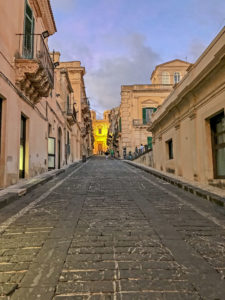The city was rebuilt in the aftermath of the tragic earthquake, and when the significant powers, clergy and aristocracy asked for their palaces to be rebuilt, it was the Baron Asmundo who divided the land perfectly.
Since the heart of the city in the lower area was the Cathedral, that was where the new palaces were built. To the right of the church are the religious buildings, the Archbishop’s Palace and the monastery of the Holy Saviour; on the land to the left the residences of the most influential aristocratic families in Noto were built, Palazzo Landolina and Palazzo Nicolaci di Villadorata.
To the right of the church are the religious buildings, the Archbishop’s Palace and the monastery of the Holy Saviour; on the land to the left the residences of the most influential aristocratic families in Noto were built, Palazzo Landolina and Palazzo Nicolaci di Villadorata.
The latter was built between 1720 and 1750 by
Don Giacomo Nicolaci
, on the present day Via Corrado Nicolaci.
The question of who the
architect
was has never been resolved; there are many theories and few certainties. However, it remains one of the most interesting and surprising buildings in Noto for the exuberant
corbels
that support the balconies of the façade and the round-bottomed wrought iron railings.